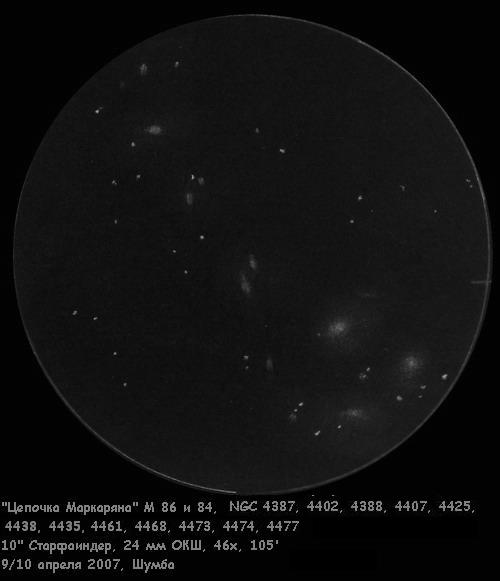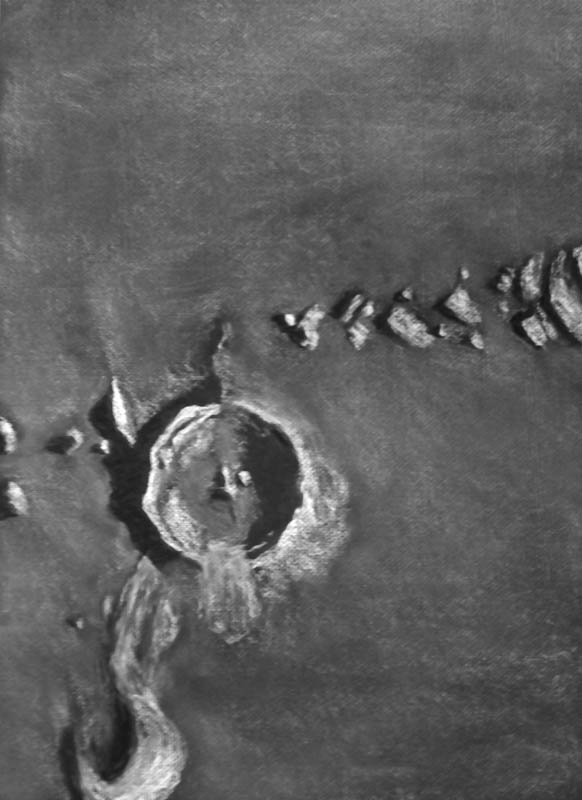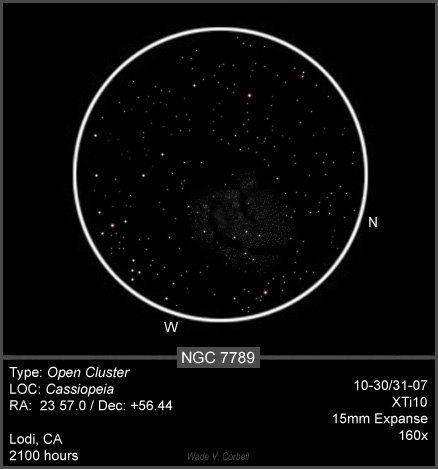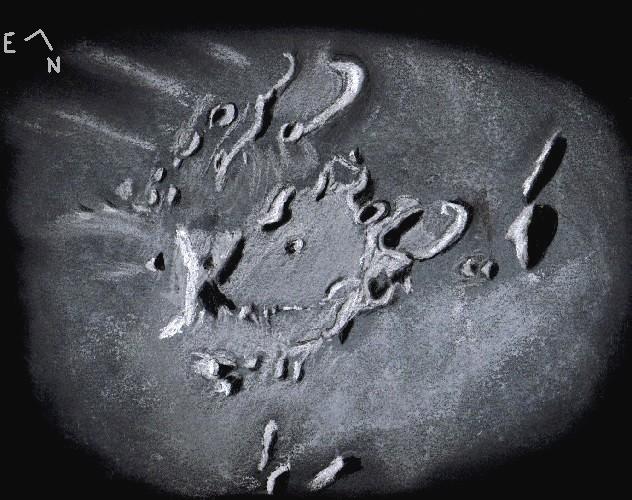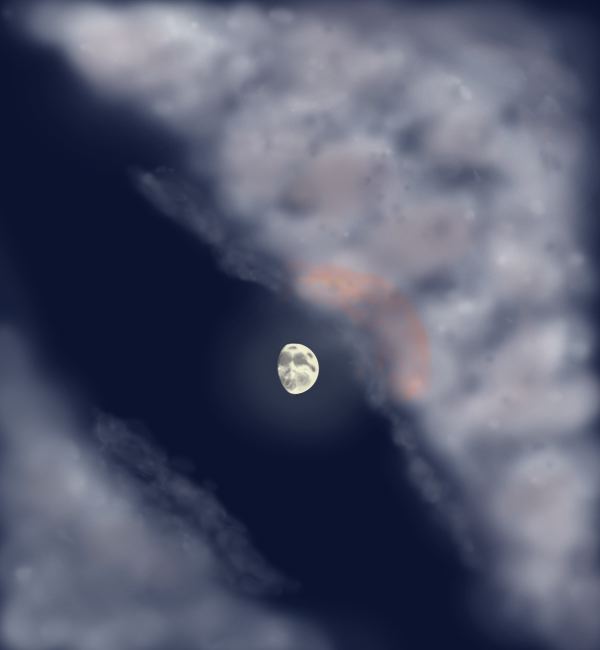
NGC 6604
Sketch and details by Eric Graff
Object Name: NGC 6604
Also Known As: H.VIII.15, Cr 373, C1815-122
Object Type: Open Cluster + Emission Nebula (Sh2-54)
Constellation: Serpens (Cauda)
Right Ascension (2000.0): 18h 18.0m
Declination (2000.0): –12° 14′
Magnitude: 6.5
Size: 6′ (some sources say 60′)
NGC Description: Cl, lRi, lC
Discovery: William Herschel, 15 July 1784
Date/Time: 4 July 2008 • 09:05 to 10:30 UT
Location: Oakzanita Springs (4,010 ft. elevation), San Diego Co., California, USA
Telescope: Parks Astrolight EQ6 • 6″ f/6 Newtonian Reflector
Eyepiece/Magnification: Parks 15mm Gold Series Plössl • 60x • 52′ FoV
Filters: Lumicon UHC, Lumicon OIII
Conditions: Clear, calm, 62°F
Seeing: Pickering 4-5
Transparency: NELM 6.3; TLM 14.0
If you sweep 1.6° north and slightly west of M16 you’ll chance upon a tight knot of five stars in a glittering field awash with hundreds of stars and marbled with complex swirls of bright and dark nebulosity. This small group (and undoubtedly many of the fainter stars that surround it) comprises the open cluster NGC 6604. The nebulosity (which I found remarkably easy to detect, even without filters) is the southernmost section of a large, but faint, HII region catalogued as Sh2-54. The 7th magnitude lucida of NGC 6604 is an O8 type star that is also an eclipsing binary (of the Beta Lyrae type) designated MY Serpentis. In spite of its spectral type, MY appears yellowish in the eyepiece; this is because the cluster (and nebulosity) is buried deeply in the Great Rift of the Milky Way, severely dimming and reddening its light.
In order to concentrate on the nebula itself, Eric notes: “I sketched the object(s) and a couple dozen of the brightest field stars and background nebulosity. Then, due to the extreme richness of the field I got out printed DSS negatives and started circling the stars I could see (which still took a fair amount of time). These were transferred to the sketches over the weekend. “

